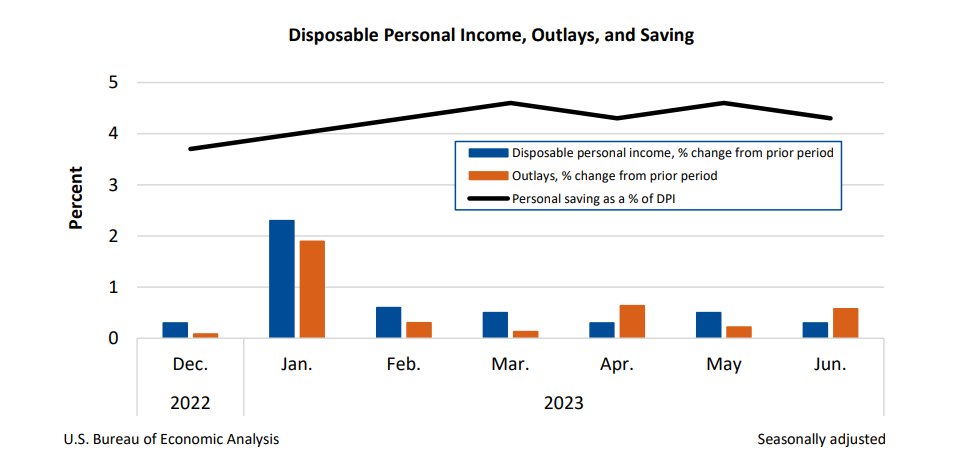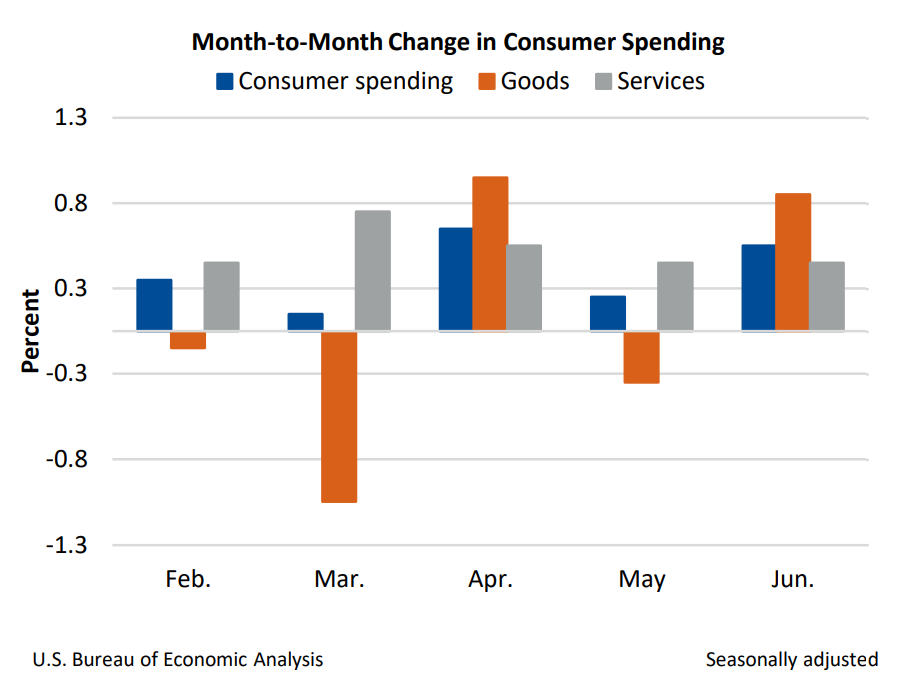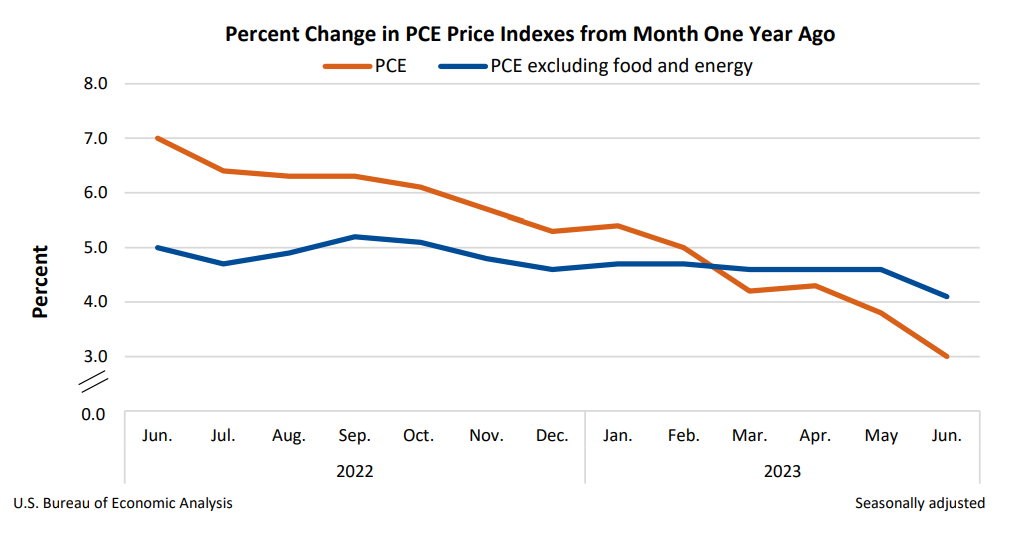Personal income increased $69.5 billion (0.3 percent at a monthly rate) in June. Disposable personal income (DPI)—personal income less personal current taxes— increased $67.5 billion (0.3 percent). Personal outlays—the sum of personal consumption expenditures, personal interest payments, and personal current transfer payments—increased $109.4 billion (0.6 percent) and consumer spending increased $100.4 billion (0.5 percent). Personal saving was $862.4 billion and the personal saving rate—personal saving as a percentage of disposable personal income—was 4.3 percent in June.
Personal income
- Within compensation, the increase was led by private wages and salaries, based on data from the Bureau of Labor Statistics (BLS) Current Employment Statistics (CES). Services-producing industries increased $46.9 billion and goods-producing industries increased $8.9 billion.
- Within personal income receipts on assets, a decrease in personal dividend income was partly offset by an increase in personal interest income.
Consumer spending
The $100.4 billion increase in consumer spending in June reflected an increase in spending for both goods and services.
- Within services, the largest contributors to the increase were financial services and insurance (led by portfolio management and investment advice services), based on market indicators and BLS price data; housing and utilities (led by housing); and recreation services (led by membership clubs, sports centers, parks, theaters, and museums), based on BLS CES as well as payment card transactions data.
- Within goods, the largest contributors to the increase were motor vehicles and parts (led by new light trucks), based on unit sales data from Wards Intelligence, and gasoline and other energy goods (led by motor vehicle fuels, lubricants, and fluids), based on Energy Information Administration and BLS data.
PCE price index
From the preceding month, the personal consumption expenditures (PCE) price index for June increased 0.2 percent. Food prices decreased 0.1 percent and energy prices increased 0.6 percent. Excluding food and energy, the PCE price index increased 0.2 percent. For a comparison of PCE prices to BLS consumer price indexes, refer to NIPA Table 9.1U. Reconciliation of Percent Change in the CPI with Percent Change in the PCE Price Index.
From the same month one year ago, the PCE price index for June increased 3.0 percent. Prices for goods decreased 0.6 percent and prices for services increased 4.9 percent. Food prices increased 4.6 percent and energy prices decreased 18.9 percent. Excluding food and energy, the PCE price index increased 4.1 percent from one year ago.
Real disposable personal income and consumer spending
Real DPI increased 0.2 percent in June. Real consumer spending increased 0.4 percent, reflecting increases in spending on goods of 0.9 percent and spending on services of 0.1 percent. Within goods, the largest contributors to the increase were motor vehicles and parts (led by new light trucks) and recreational goods and vehicles (led by video, audio, photographic and information processing equipment and media). Within services, the leading contributor to the increase was financial services and insurance (led by portfolio management and investment advice services).
For more information, read the full release.



